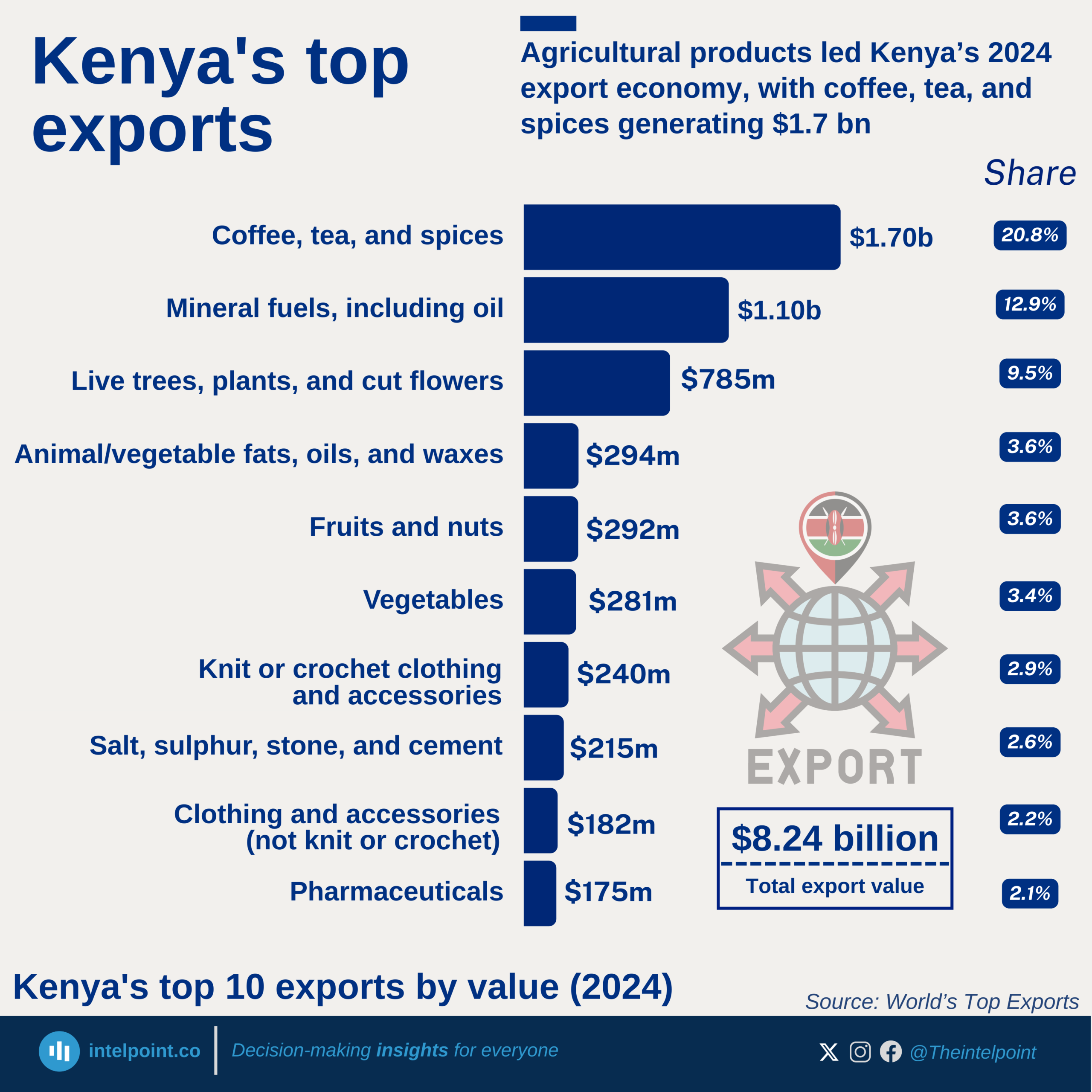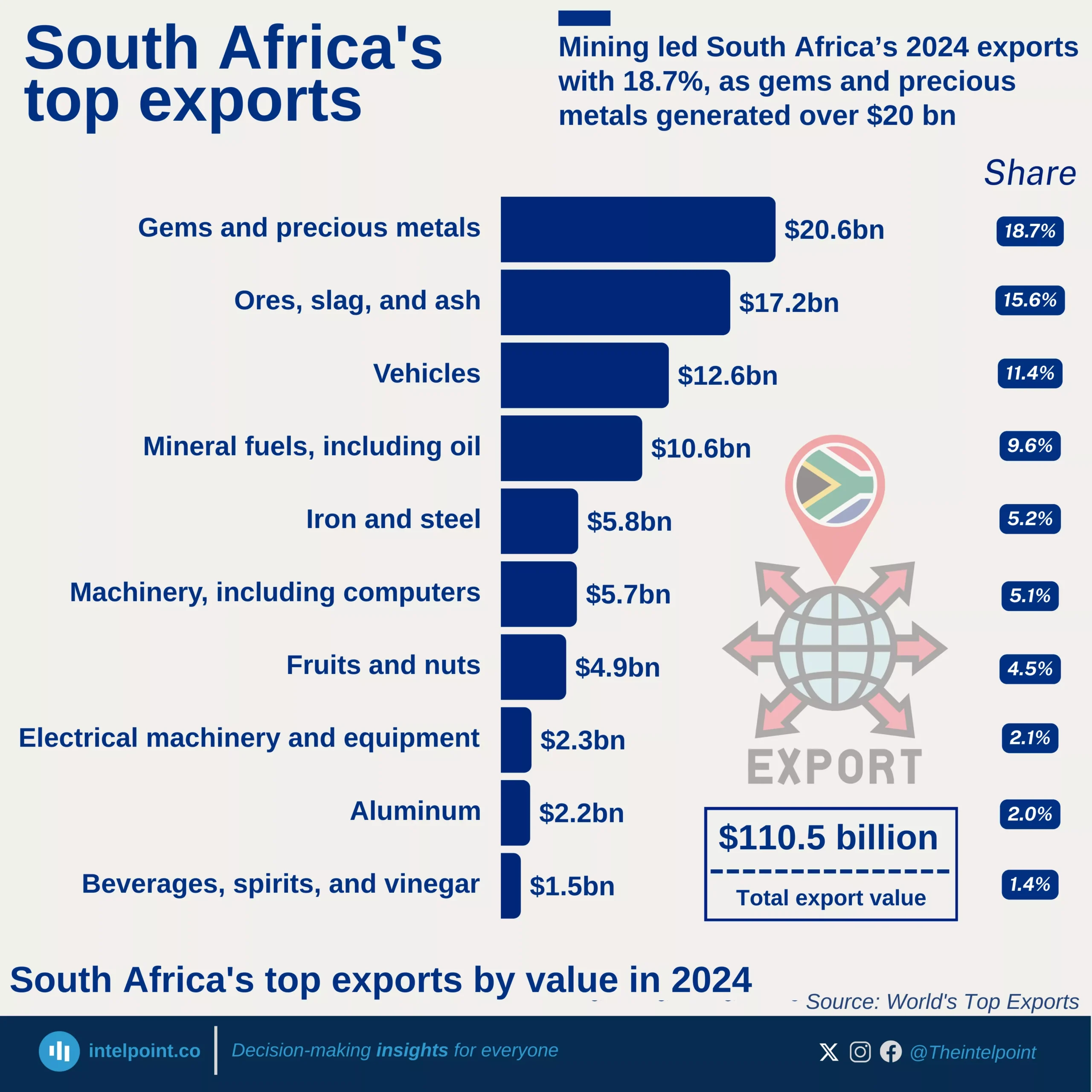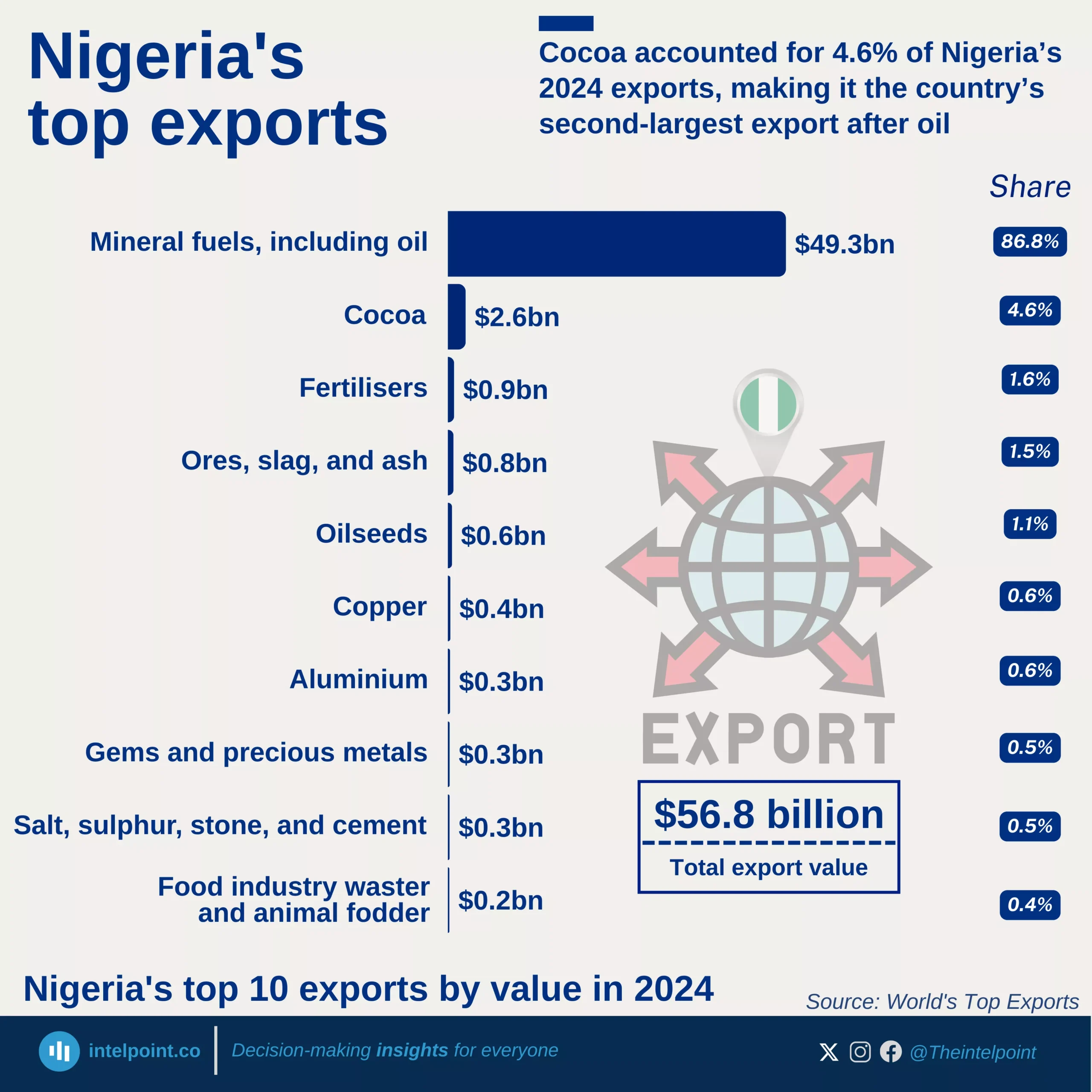In Q2 2025, Nigeria’s trade performance remained strong, with total trade climbing to ₦38.04tn. Exports outpaced imports, reaching ₦22.75tn against ₦15.29tn in imports. The result was a ₦7.46tn trade surplus, reflecting Nigeria’s heavy reliance on crude oil exports, which made up more than half of total export earnings. While manufactured goods drove import demand, Nigeria’s positive trade balance underscores the country’s continued dependence on oil to sustain foreign exchange inflows.





